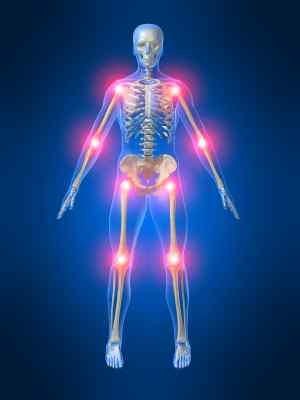Dealing with chronic pain needs both focus of mind and body. There are many non-invasive and drug-free techniques that can help relax your body. They also allow you to take control of the pain. That said, it takes some practice to achieve this effect using any technique.
They help you release some of the tension in the muscles and help reduce the severity of the pain. They can also be useful in guiding you to take the focus away from the pain. To find the right approach for your body and mind, make sure you go through this list of non-invasion and drug-free pain relief strategies.

Exercise
Some form of exercise and physical activity can be great for your body and muscle strength. It gives you more flexibility and helps restore motion in muscles. Exercise is often used as a car accident pain management technique to get relief from the pain of car accident injuries. This method also works well for long-standing pain and pain from other types of injuries.
It’s a known and practiced form of physical therapy. It helps you control pain and may include water therapy, aerobic routines, and stretching exercises. Some form of physical activity is necessary for the well-being of your body and mind. This is why exercise can be effective in pain control and management.
Manual force technique
The manual technique involves adjusting of specific areas by applying force to the muscles, joints, and ligaments. Some chiropractors often use spinal adjustments to help patients enhance mobility. They also help to reduce pain and stress. It also improves mental well-being, sleeping habits, and levels of energy.
Behavioral modification
You can also use behavioral modification techniques to improve a patient’s response to pain in different body parts. This behavioral theory educates the patient about different means of pain relief.
A great example of this would be the biofeedback method. This involves controlling muscle tension, heart rate, blood pressure, and other vital to reduce symptoms of the pain.
Heating or cooling technique
This might be one of the more used and known non-invasion and drug-free methods for pain control. This pain management technique involves using cold packs and or hot packs on muscles or parts of the body where you are experiencing pain. It is known to bring patients some comfort and relief from the pain.
Electrotherapy
Electrotherapy refers to using electrical energy for medical purposes. TENS is one of the most known forms of electrotherapy. TENS attempts to reduce pain by using low-voltage electric energy to engage with the nervous system. You will now find a variety of choices for smart wearable devices that use the TENS approach. This helps to reduce pain in various parts of the body, such as the elbow and knees.
Altered focus technique
Altered focus is imagery and chronic pain management technique. It is a great method to show how powerful the mind can be in shifting sensations in the body. This method involves concentrating attention on a specific non-painful part of the body. It helps in focusing away from the pain, such as your hand or foot. For example, you imagine your hand is being poked by a small needle. It will help shift the focus from the part where you are experiencing pain. This technique works if you are able to take the mind away from the actual source of pain.
Dissociation technique
As the name says, this imagery technique requires you to mentally separate the pain or the painful part from the rest of your body. The idea is to strengthen your body so that you are able to separate the body and mind. For example, try imagining that the painful neck is sitting on a chair across from you. Now tell it to stay there far away from you and your mind.
Positive imagery
This technique of pain relief allows you to concentrate your mind on a positive spot. Such as the beach, the mountains, or somewhere else that gives you pleasure and positivity. This will help you achieve a safe, carefree, happy, and relaxed state. At the same time taking the attention away from the pain, you are experiencing.
Symbolic imagery
This type of imagery pain control method requires you to think of a symbol that represents your pain. It might be a bright light bulb or an annoying nose. Next, you need to imagine dimming the brightness of the bulb or reducing the volume of the irritating noise. This can help take the focus away from the pain and make you feel a reduction in the pain you are experiencing.
Age progression or regression
This technique requires you to imagine and project yourself forward or backward in time where you don’t feel any pain. You need to think of yourself in a pain-free state. Next, you need to guide yourself to pretend that this is your true state.
Practicing pain relief and management techniques
There is no doubt long-term lasting pain can turn your life upside down. The constant discomfort, irritation, and the pain itself can end up being a big distraction from important things in life. It can even disturb your routine. Before adopting any of the pain control methods mentioned in this article make sure to visit your doctor.
You need some practice to make these non-invasion and drug-free approaches successful. Once, you get in practice you can even follow some of these techniques while you are busy in a routine activity.
It is important to understand how your body and mind react to pain management techniques. This will give you a greater sense of control over chronic pain. It will also help you in experiencing an improved quality of life.





